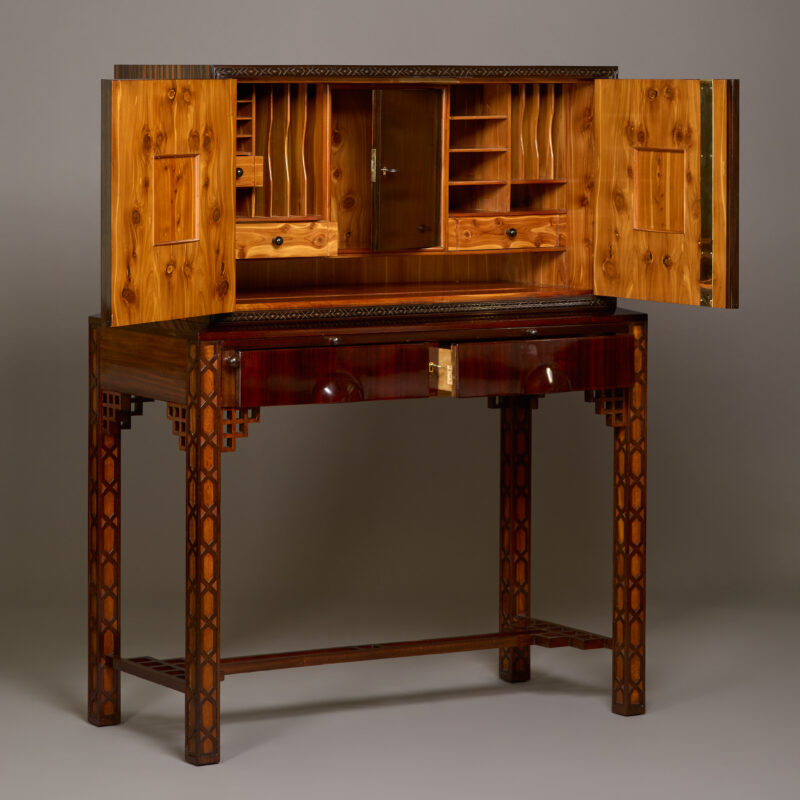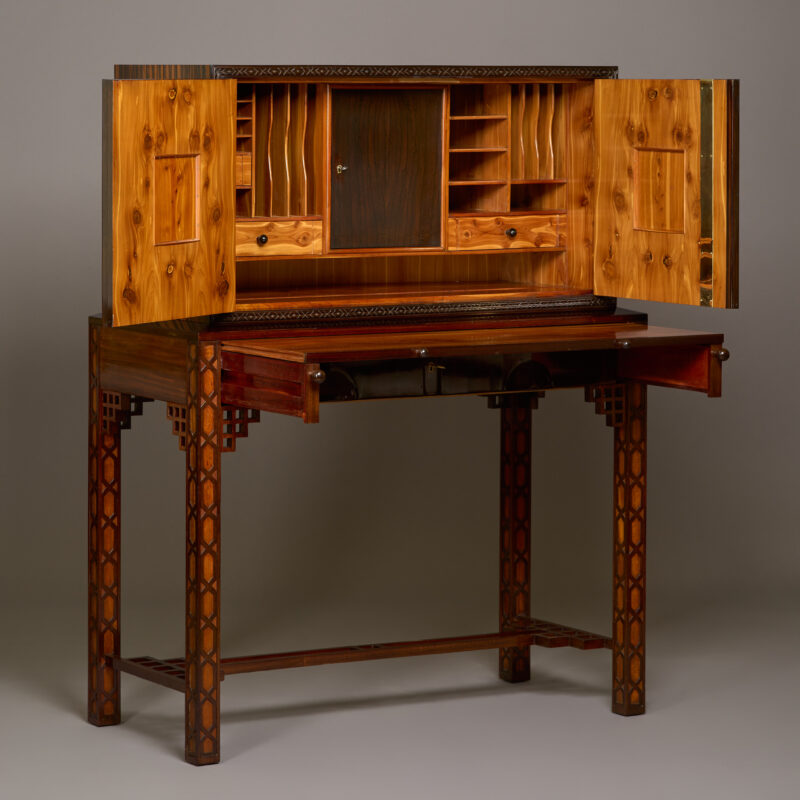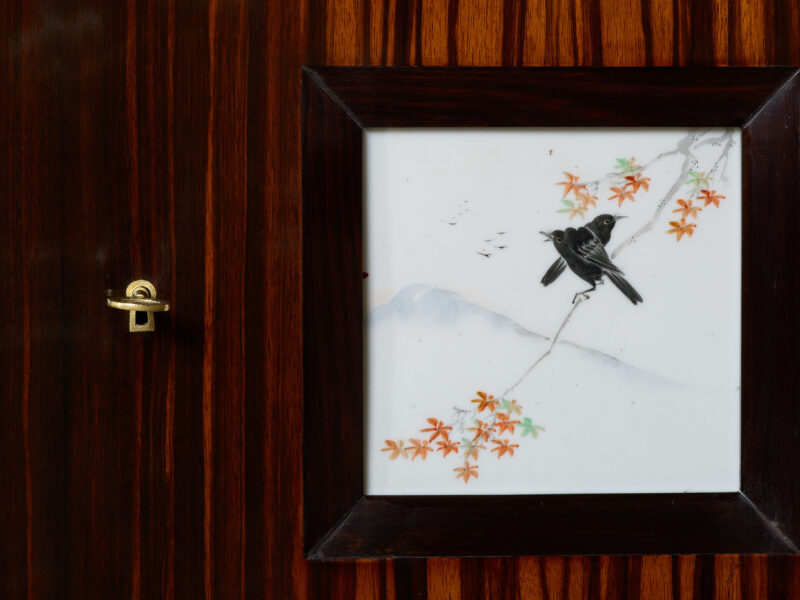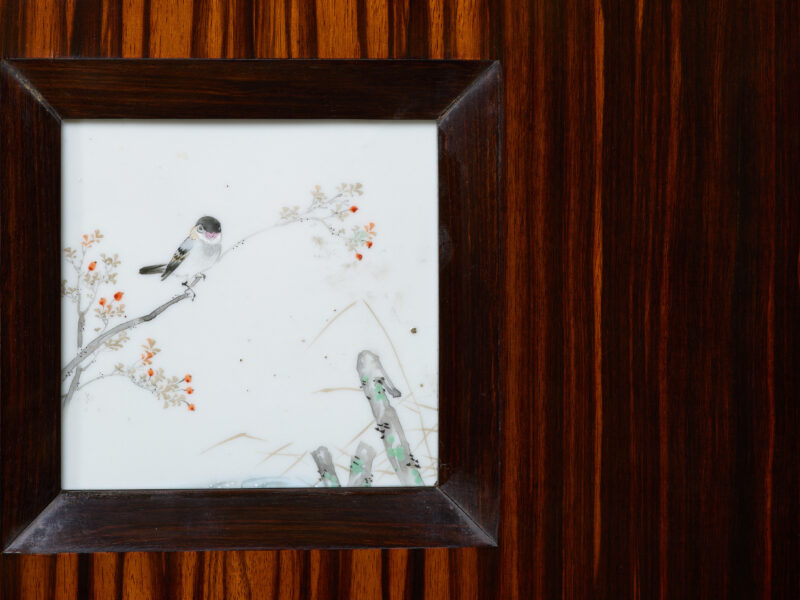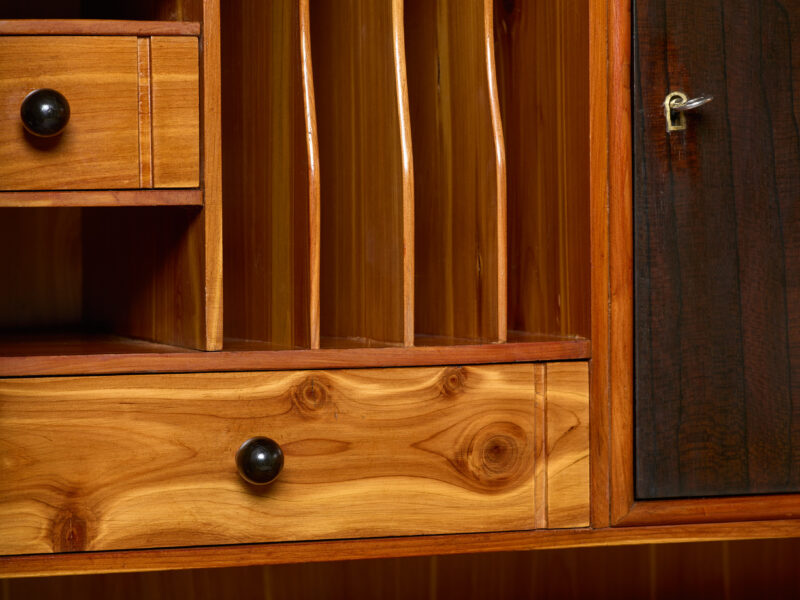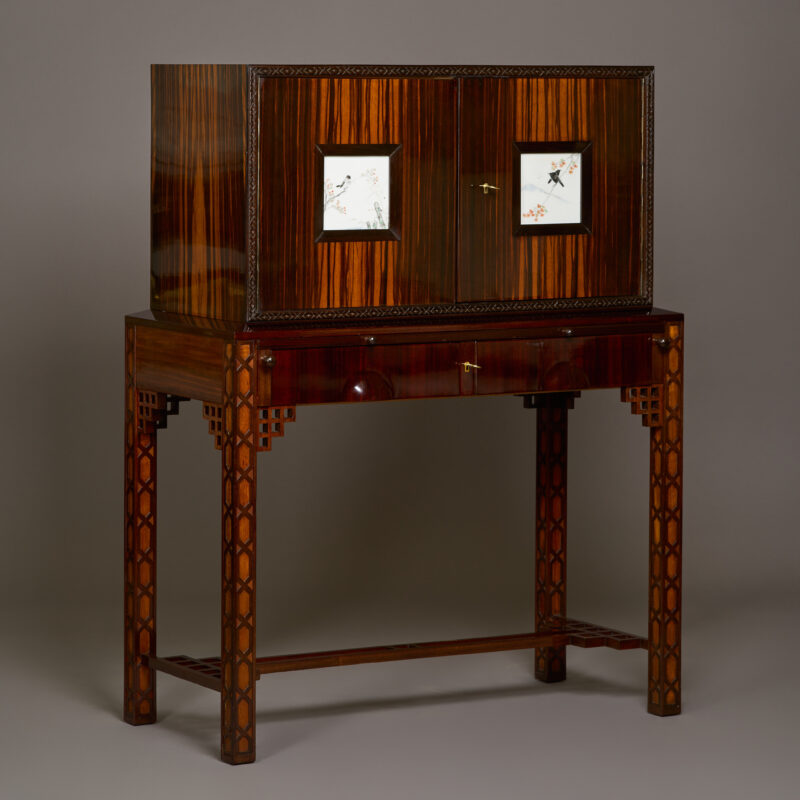
Writing Secretary in Japanese Style
This writing furniture, created in two parts, consists of a console-shaped base. The four feet are adorned on all sides with elaborately handcrafted geometric hexagonal borders. Both the corners beneath the writing surface and the cross-bracing of the feet are decorated with geometric ornaments typical of Asian style.
The two main drawers of the base are flanked on both sides by compartments on which the extendable writing surface rests. The drawer handles are recessed and integrated into the veneered drawer front, which is slightly outwardly curved.
The writing surface is elegantly veneered in exotic Makassar wood and adorned on the front with a small, encircling carved border.
The two doors feature finely differently painted porcelain pictures in their centers. The delicately painted porcelain pictures in the Japanese style depict a mountain landscape in the background. In the foreground, we see grass, branches with flowers, and leaves on which birds are perched.
The interior of the secretary is made of ornamental pine wood. The center is occupied by a small lockable tabernacle, which is flanked on both sides by various horizontal and vertical compartments as well as small drawers. Below this area, there is a continuous shelf running the entire width. The piece of furniture is also exclusively veneered on its back, allowing it to be placed freely in a room.
The two large keys, made of brass, are signed with H. Irmler Wien. This piece of furniture is a splendid example of the exceptionally high craftsmanship of the workshops of Art Carpentry Irmler, known for producing for both their elite clientele and the most renowned architects of that era.
Heinrich Irmler was a significant figure in the art of carpentry in Vienna during the late 19th and early 20th centuries. His company was one of the leading art carpentry establishments of that time. Its proximity to the School of Applied Arts, whose professors, as well as to architects of the Vienna Secession such as Otto Prutscher, enabled the production of the most renowned art and furniture carpentry according to their modern designs. Many of the notable art carpentry families sent their children to the newly established School of Applied Arts to learn the modern design language from the professors who taught there.
The Vienna School of Applied Arts:
Emperor Franz Joseph I founded the ‘School of Applied Arts of the Imperial and Royal Austrian Museum of Art and Industry’ in September 1867 and opened it on October 1, 1868. In 1877, the School of Applied Arts moved to its own newly constructed school building by Heinrich Ferstel (1, Stubenring 3). The University of Applied Arts Vienna emerged from the School of Applied Arts in 1999. Felician von Myrbach, a member of the newly founded Vienna Secession artists’ association, was appointed director of the school in 1899, a year after it was separated from the administration of the museum.
Myrbach’s tenure saw numerous reforms and appointments that made the School of Applied Arts one of the birthplaces of the Austrian Art Nouveau movement and established its reputation as a modern-oriented institution.
Otto Wagner, as a member of the school’s board of directors, had a significant influence on its reform implementation. The faculty at the time reads like a who’s who of the much-celebrated ‘Vienna around 1900’, with names such as Koloman Moser, Josef Hoffmann, Alfred Roller (who began his influential term as director in 1909), and students like Oskar Kokoschka.
As one of the many graduates of that era, Gustav Klimt is worth mentioning here.
Heinrich Irmler (1839−1914), K. u. K. (Imperial) Art Carpenter Vienna:
In 1871, Irmler began producing art furniture, which soon gained widespread popularity. In well-equipped modern workshops, he crafted elaborate furniture for an upscale clientele. He also created office and hotel furnishings in a separate department. Significant commissions in Vienna in which he was involved included the interior design of the Natural History Museum, the Parliament, the Palace of Justice, the City Hall, the University, and the Chamber of Commerce. Due to his participation in numerous exhibitions, where he received many awards, he successfully attracted international customers to his high-quality products.
In 1908, his son took over the leadership of the company.
References: ‘Die Möbel-Kunstindustrie Österr.,’ in: ‘Großind. Österr.,’ Erg. Bd. Tl. 1, S. 159f.
‘L.: N.Fr.Pr.’ from November 12, 1914; ‘Großind. Österr.,’ Erg. Bd., S. 344.
Publication: ‘ÖBL 1815 – 1950,’ Vol. 3 (Issue 11, 1961), S. 42.”
